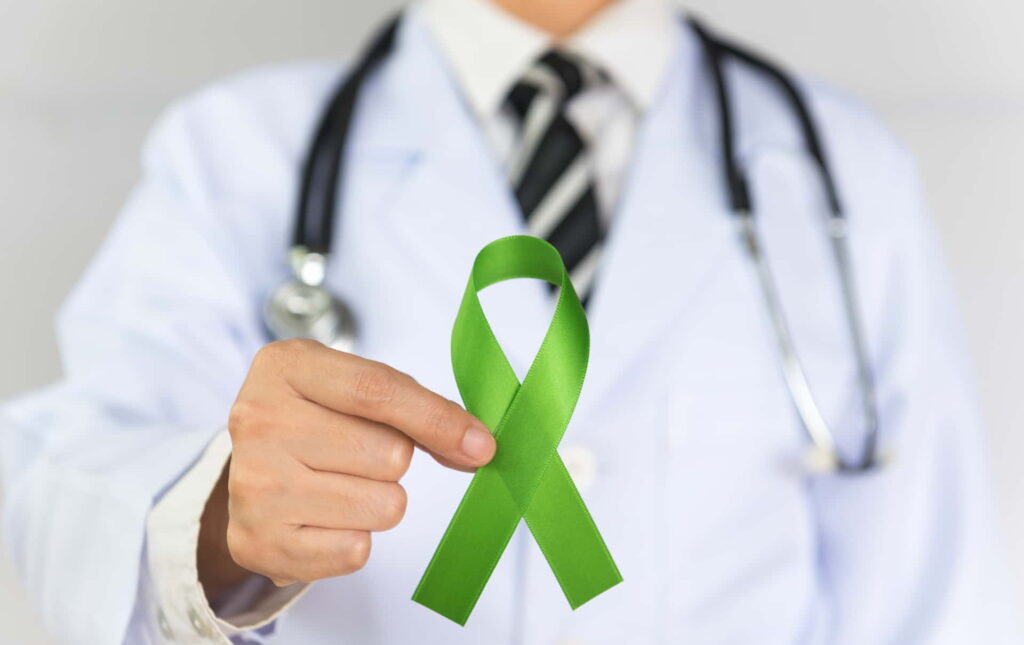
lymphoma
Understanding the causes and symptoms of lymphoma for effective treatment and prevention to improve the survival rate
Lymphoma is one of the top 10 cancers in Hong Kong. It is a type of blood cancer affecting the lymphocytes, which are white blood cells running all over the body as a part of the immune system. Therefore, lymphoma can develop in any part of the body. The causes of lymphoma include hereditary diseases, environmental pollution, viral and bacterial infections, immune system malfunction, etc. Lymphoma may be asymptomatic in the early stage, therefore is easily ignored or not diagnosed until later stages. The disease may have spread to the bone marrow and other organs by then. There are two main types of lymphoma: Hodgkin’s lymphoma, and non-Hodgkin’s lymphoma (NHL). In Hong Kong, more lymphoma patients are diagnosed with NHL. Early diagnosis and treatment are crucial for a higher survival rate. There are currently various clinical treatments for lymphoma, and the best treatment has to be determined according to the condition of the disease.

According to the recent analysis by the Hong Kong Cancer Registry (HKCaR), the mortality rate of NHL patients in Hong Kong ranked 8th in the top 10 cancers. Therefore, the survival rate of lymphoma is still high. Among the top 10 most common cancers in Hong Kong, NHL is more likely to develop in men (8th) than in women (10th). NHL can be classified into 3 main types clinically, including indolent, aggressive, and highly aggressive lymphomas. As their names suggested, indolent lymphoma is a slow-growing tumor. Most patients can survive for 5 – 10 years even without treatment. However, indolent lymphoma is not curable. In contrast, the conditions of patients with aggressive and highly aggressive NHL deteriorate very rapidly, and they may lose their lives in a matter of months without prompt treatment.
Symptoms of Lymphoma
The most common symptom of lymphoma is swelling of the lymph nodes in the neck, armpits, or groin areas. This swelling is usually painless and appears as a lump under the skin that patients may not notice. In addition, lymphoma can cause unexplained fever and night sweats. Other symptoms of lymphoma include:
- Chest pain, bone pain or allodynia
- Cough and shortness of breath
- Swelling of lymph nodes
Swelling, which is usually painless, can occur in a single or multiple lymph nodes, mostly in the neck, followed by the armpits and groin (the area between the lower abdomen and thighs). - Fever
- Loss of appetite
- Unexplained weight loss
- Excessive sweating, especially at night
- Persistent fatigue or tiredness
- Skin irritation or itching
Other diseases such as tuberculosis and autoimmune disease may exhibit the same symptoms. Therefore, if you notice any of the above symptoms, seek immediate medical advice to check for the presence of lymphoma.
Causes of Lymphoma
Lymphatic vessels and lymph nodes run all over the body, while the lymphocytes circulate in various organs and tissues to fight infections. When lymphocytes develop malignant lesions, they divide and grow uncontrollably, and then gradually replace the normal cells, weakening the immune system’s defence mechanisms. At the same time, the lymph nodes become larger and form painless tumors, which are lymphoma.
Certain risk factors that contribute to lymphoma include:
- Genetic disorders (Wiskott-Aldrich syndrome)
- Environmental carcinogens, such as radiation
- Viruses, such as HIV and Epstein-Barr virus (EBV)
- Bacterial infections (such as Helicobacter pylori)
- Chemical drugs
- Immune system disorders
Survival Rate of Lymphoma

Screening of Lymphoma
The doctor will first examine the patient’s neck, armpits, chest, or groin for signs of swelling, followed by initial testing such as the most commonly used biopsy. There are two ways of conducting a biopsy: needle biopsy and excisional biopsy.
- Needle biopsy: Tissue samples will be extracted from the tumor using a needle.
- Excisional biopsy: The patient will receive local or general anaesthesia to have the entire lump removed. The lump will then be examined under a microscope to identify the presence of cancer cells.
For people with high risk of lymphoma, regular check-ups are recommended to identify early-stage cancer cells for earlier detection and treatment to improve survival rate.
Diagnosis of Lymphoma
If a patient is diagnosed with lymphoma, the doctor will conduct further clinical testing and tumor diagnosis to determine the position of cancer cells.
- Blood Test
A blood sample is taken to examine the number of red blood cells, white blood cells and platelets. A low blood count may indicate the lymphoma has spread to the bone marrow. The analysis of blood count also enables the doctor to diagnose if the liver and kidneys have been affected by the cancer cells.
- Chest X-ray
X-rays are taken to see if the lymphoma has spread to the lymph nodes in the chest or lungs.
- Throat examination
Check the tonsils and other parts of the throat to look for the swelling of lymph nodes.
- Bone marrow biopsy
After giving the patient local anaesthesia, the doctor will extract samples of bone and bone marrow to test for the presence of lymphoma cells under a microscope.
- Ultrasound scan
An ultrasound probe will be used to emit high-frequency sound waves and collect the echoes bouncing off the organs, which will then be converted into images by a computer to visualize any abnormalities in the body.
- Computed tomography (CT) scan
It is another type of X-ray diagnosis. Multiple pictures of the patient's chest and abdomen are taken and imported into the computer to generate detailed images of the body.
- Positron Emission Tomography (PET) Scan
A PET scan is a functional imaging test that offers detailed information about a particular organ or system of the body. It is commonly used to evaluate and diagnose cancer, neurological disorders in the brain, and cardiovascular disease. Before the scan, a radiologist will inject a radiopharmaceutical into the patient’s body. During the scan, a specialized camera will be used to detect the amount of radiation emitted by the radioisotope, and a multidimensional image of the examined area will be constructed by a computer. The radiopharmaceutical usually accumulates in cancer tissues rather than in healthy tissues.
- Lumbar puncture
The doctor will insert a thin needle into the patient’s spine and extract samples to look for any lymphoma cells in the central nervous system.
The doctor will determine the stage and type of the lymphoma, as well as the appropriate treatments for the patient based on the location of the lymphoma, the number of lymph nodes affected, and whether it has spread to other lymph nodes or tissues.

Treatment of Lymphoma
Lymphoma treatment depends on its type, with chemotherapy and radiotherapy being conventional and effective treatments. Common options include:
- Chemotherapy
Chemotherapy refers to the administration of anti-cancer drugs intravenously or orally. The drugs will then circulate through the bloodstream to various body parts, destroying or inhibiting the division and proliferation of cancer cells. If the cancer has slow growth, the patient may take oral drugs at home or stay in the hospital for a short period to receive intravenous injections. If the cancer has rapid growth, multiple drugs have to be injected intravenously for several days, and then stopped for a few weeks to let the body recover from the side effects.
- Radiotherapy
Radiotherapy utilizes high-energy radiation to destroy cancer cells and stop their division. The doctor will mark the treatment area on the patient’s skin. The duration of treatment depends on the type and size of the lymphoma.
- Targeted Therapy
Targeted Therapy targets the CD20 receptor, with the principle of identifying and targeting the unique growth factor receptors which may be associated with cancer, thereby preventing tumor cells from further proliferation. The relationship between targeted therapy drugs and tumor receptors is like that of a lock and its corresponding key. Therefore, the targeted therapy drugs are less likely to affect normal cells, but at the same time can effectively inhibit the growth and metastasis of tumors.
- Peripheral blood stem cell transplantation (PBSCT)
This treatment may be recommended if the aforementioned treatments have no effects or if recurrence occurs. Since high-dose chemotherapy may destroy blood stem cells in the bone marrow, PBCST can help support and restore the patient’s blood cell level by transplanting the healthy blood-forming cells from the blood of the patient or a donor.

Recovery and Rehabilitation of Lymphoma
Patients have to receive regular check-ups after treatments. The frequency is usually once per month in the beginning, but will gradually decrease. Apart from a balanced diet, moderate exercise and rest, patients should also pay attention to personal hygiene and refrain from going to crowded places to avoid infection. Patients should seek immediate medical advice and arrange examinations if there are any abnormalities or symptoms.
Lymphoma Prevention
Maintain your body’s normal function not to create a gap for tumors to grow.
- Exercise moderately
Choose the appropriate exercise according to your physical condition without exhausting yourself.
- Maintain a healthy diet
Choose foods that are easy to digest and absorb. Avoid picky and binge eating.
- Stay optimistic
Relieve stress moderately to ease mental tension.
Lymphoma FAQ
Q: What would happen when you have lymphoma?
The common symptoms of lymphoma include swollen lymph nodes in the neck, armpits, or groin. They are usually painless and associated with fever, unexplained weight loss, night sweats, occasional chills, and persistent fatigue. Lymphoma symptoms are difficult to detect and tumors can appear in any organ of the body as lymphoid tissue is present throughout. Therefore, individuals at high risk of lymphoma should be particularly vigilant and undergo regular check-ups to detect cancerous cells early and improve survival rates.
Q. What type of lymphoma has the highest survival rate?
The 5-year survival rate for patients with Hodgkin's lymphoma is 87%. If the cancer is detected at its earliest stage, the 5-year survival rate will be 91%.
Q: What are the treatment options for lymphoma?
There are several ways to treat lymphoma. Chemotherapy is usually the first-line treatment and may also be applied in conjunction with radiotherapy. Some patients may receive peripheral blood stem cell transplantation after high-dose chemotherapy. Targeted therapy drugs such as anti-CD20 antibodies are another option for certain patients.



